There is something about spiders that makes people’s skin crawl, especially when looking at scary spider pictures; maybe it has to do with all those hairy legs? To get in the spirit of spooky Halloween, we are diving into the world of the top ten scariest spiders. After looking at this top ten list you may think that all spiders are scary but remember they rarely bite and very few are dangerous. It’s still many people’s guilty pleasure to look at scary spider pictures – to satisfy their need, I compiled a list of the scariest ones.
Table of Contents
Spiders are also really important to the environment because most eat other insects, which help control pest populations. If you do see venomous spiders, like the ones in this list, remember to stay away! Although they rarely bite it’s much safer to not test their mood.
Top 10 Scariest Spiders Pictures
Why are humans afraid of the itsy bitsy spider? Some psychologists claim that it is from conditioning- when we see our parent or older sibling scream at the sight of eight little legs scurrying across the ceiling, we learn to fear it as well. Behaviorists claim that is the long leg to body ratio and the erratic speed with which they scutter under the bed. Geneticists even say that arachnophobia is encoded in our DNA. Or maybe it’s the fangs. Whatever the reason, here are scary spider pictures – the most horrifying in the world today.
10. Wolf Spiders
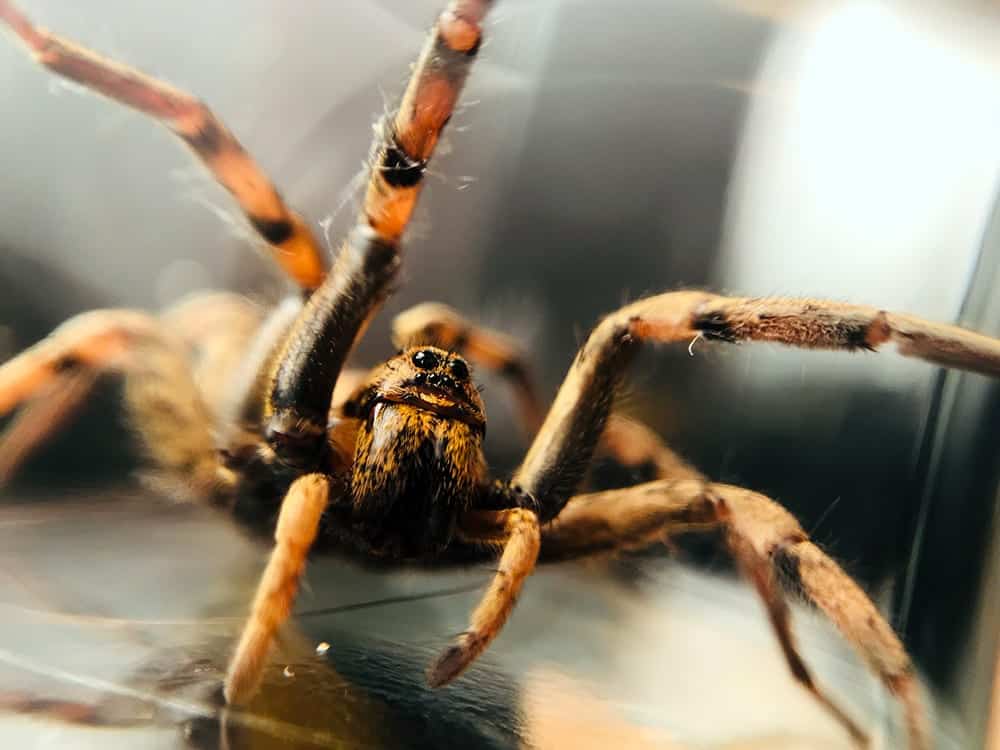
Wolf spiders are a large family found all over the world, ranging in size from a quarter inch to an inch. They stalk their prey using sharp eyes and swift strikes., frequently wrapping their legs around the victim and rolling as the inject venom. They are identified by their unusual eye pattern- two medium eyes on the side, two large eyes on the top front and four small eyes in a row under the large eyes. A female will carry the egg sac with her and when they hatch, she carries the babies for several days. A female with eggs or hatchlings can be aggressive, but this spider is not generally harmful to humans.
Read more: https://en.wikipedia.org/wiki/Wolf_spider
9. Brazilian Salmon Pink Bird-eater
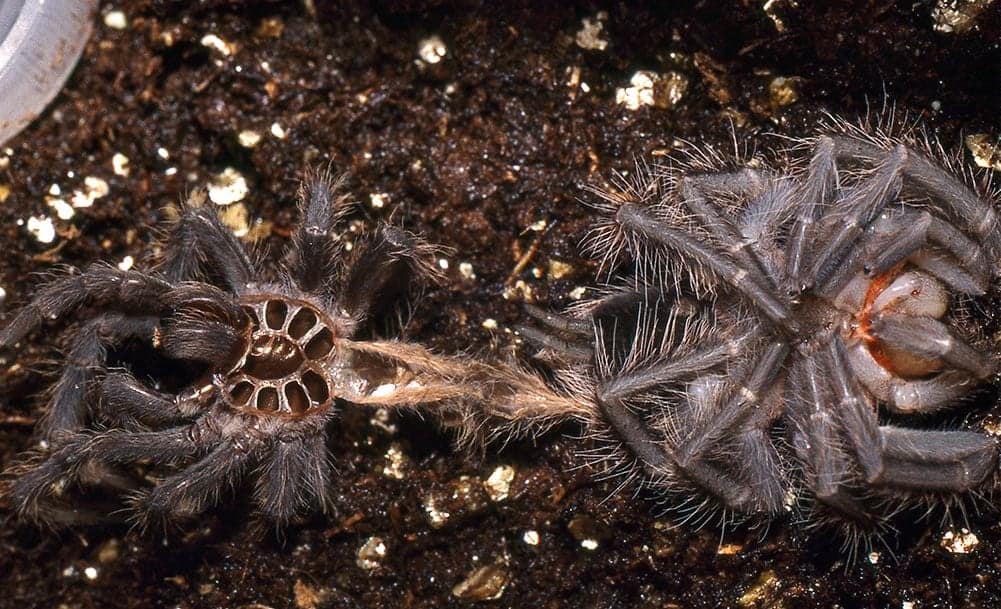
Brazilian Salmon Pink Bird-eaters are another species of tarantula, also found in South America. They live in underground, spider silk lined burrows during the day and hunt at night. They have a leg span of 10 inches, and pretty pink accents on a dark brown body. They prefer insects, lizards and rodents, but would certainly eat a hapless bird, should one be available. They use specialized feelers, called pedipalps, to sense the world around them. Because of their exotic nature and pretty coloring, they make popular pets. They can reach full size in two years, and molt regularly.
Read more: https://en.wikipedia.org/wiki/Lasiodora_parahybana
8. Giant Huntsman
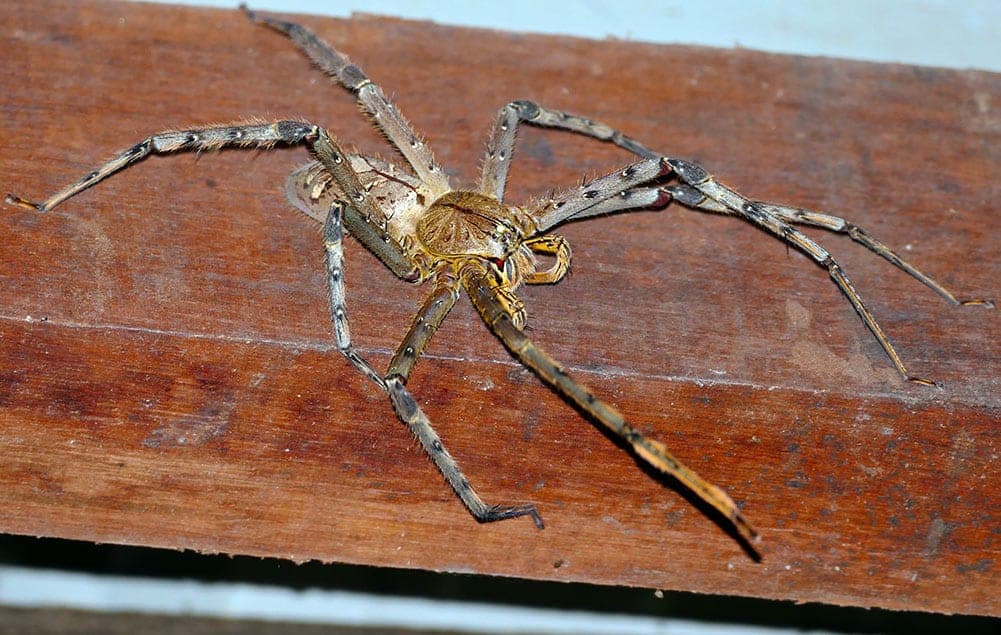
Found in Laos, a tropical Asian country, the largest Giant Huntsman had a leg span (the length from the tip of one leg to the tip of the opposite leg) of 12 inches. Think of a dinner plate with a spider on it. They are called huntsmen because they do not build webs, but instead chase and capture prey. They can run as fast as a meter per second, and their preferred menu includes insects, lizards and small mammals. They are also referred to as Crab Spiders due to the joints in their legs, which resemble crab legs. They are venomous, but their bite is not generally fatal to humans.
Read more: https://en.wikipedia.org/wiki/Giant_huntsman_spider
Bonus: Giant Huntsman eating a mouse
7. Goliath Bird-eater
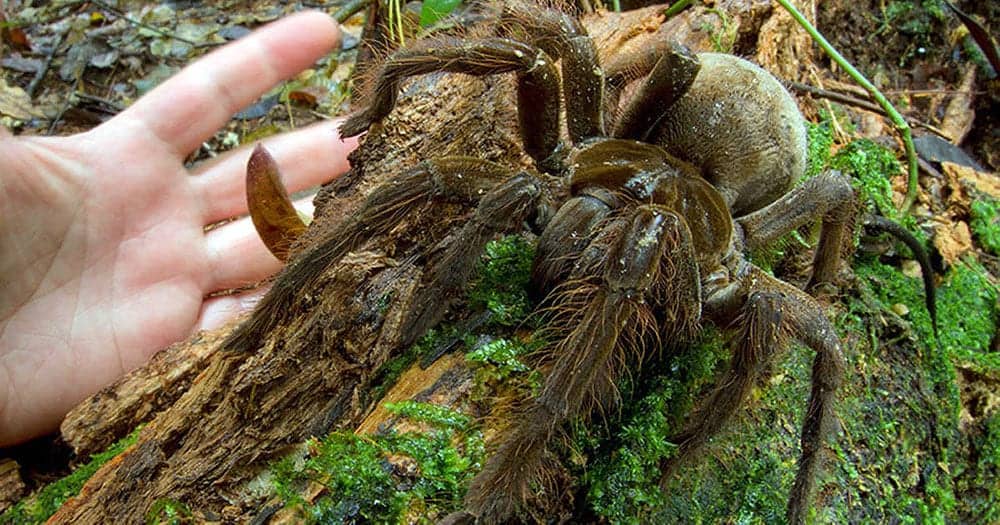
The Goliath Bird-eater doesn’t generally eat birds, although, if it had the opportunity to catch one, it would gladly liquefy the avian’s guts and suck them out. It generally sticks to a diet of insects, frogs, and rodents. It is a member of the tarantula family and is the world’s largest spider weighing in at 6 ounces and with a leg span measuring 12 inches. They can be found in South American rainforests. They use specialized leg hairs to sense the vibrations in the world around them, and if they sense danger, they can rub their legs together to release harpoon-tipped (urticating) hairs to irritate a would-be predator. Its fangs are strong enough to pierce a mouse’s skull and it makes a hissing sound by rubbing its legs together. It uses webbing to line its underground burrow, but not to catch prey. The young typically spend the first year or two with the mother. The Goliath Bird-eater’s venom won’t kill a human, but the pain from the fang would be excruciating.
Bonus: Not only does the Goliath Tarantula have giant fangs, but also dangerous hair that can be used to deter predators.
Read more: https://en.wikipedia.org/wiki/Goliath_birdeater
6. Sierra Cacachilas Spider
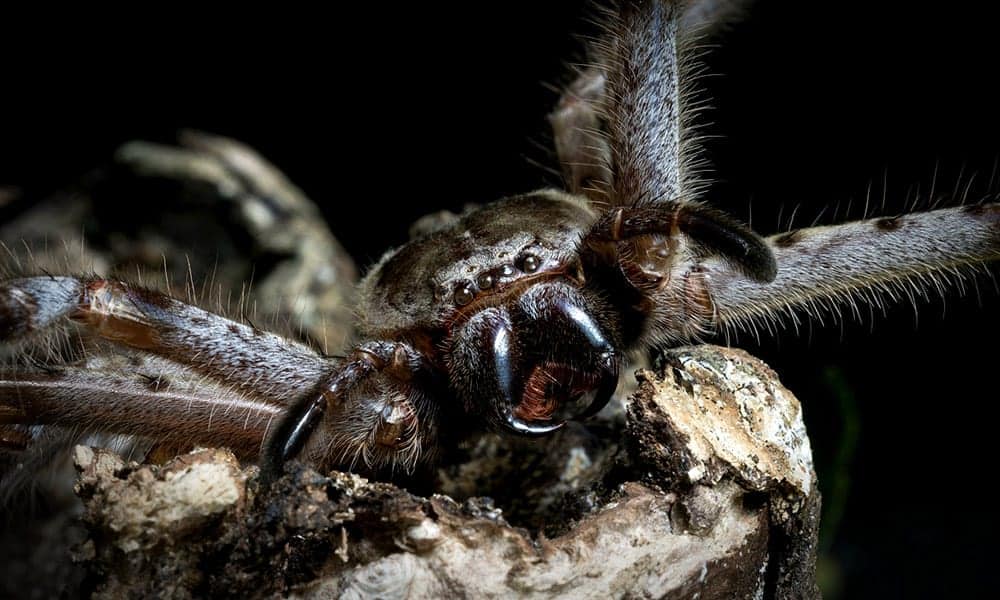
Imagine a big hairy spider with red fangs and a five-inch leg span in a deep dark cave. This newly identified wandering cave spider was recently discovered in California. It took four years of research to be certain, but this is not just a new species, but a new genus as well. It is venomous, but not particularly deadly to humans. It is so new that little is known about it, except that it does not build a web and that it lives in caves and abandoned mines.
Read more: https://www.livescience.com/58644-big-furry-spider-discovered-in-cave.html
5. Camel Spider
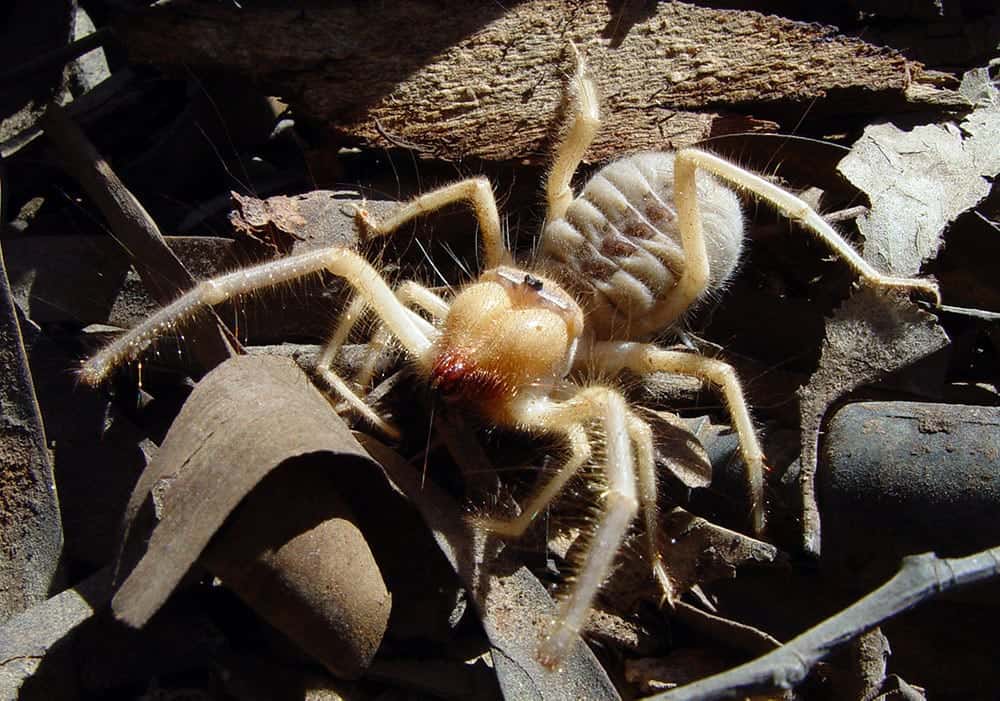
Camel Spiders are not technically spiders, although they are eight-legged arachnids that liquefy their lunch. They are solpugids and they cannot inject venom into their victims, but instead chew on it until the digestive juices turn the flesh into liquid. They are about 6 inches long, 2 inches of which is a vicious jaw. They live in desert regions in the Middle East and the American Southwest. They reached mythical status during the Iraq Wars when stories surfaced of Camel Spiders hunting and eating camels. Photographs, taken in the style of a tourist holding up the Leaning Tower of Pisa, showed them to be half the size of a human. They actually prefer insects, lizards, rodents, and birds.
Read more: https://en.wikipedia.org/wiki/Solifugae
4. Brown Recluse Spider
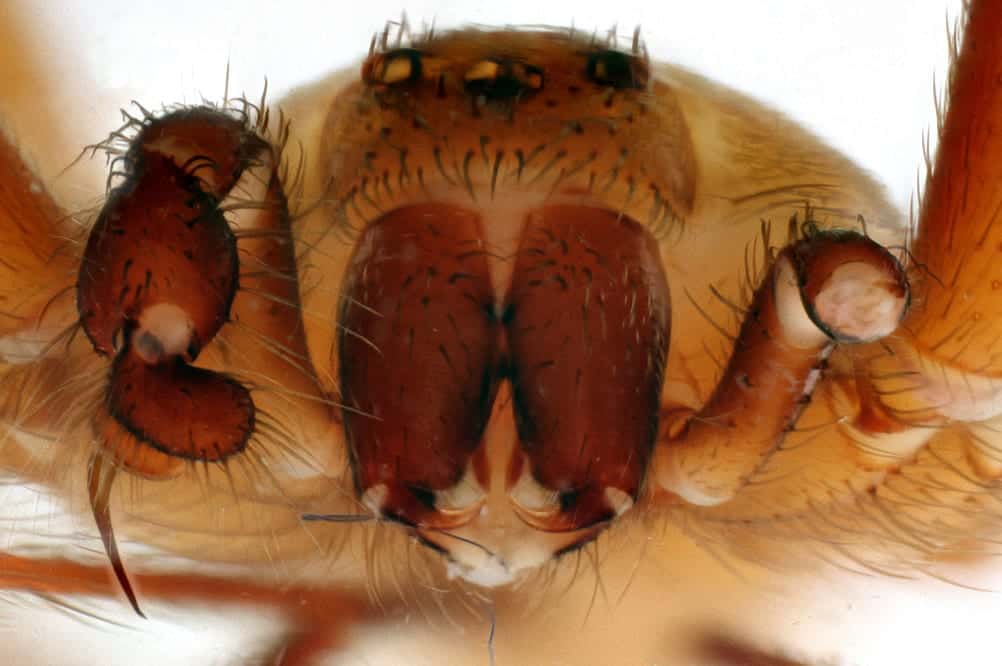
The Brown Recluse or Fiddle-back Spider is only found in the middle southern United States. Although it is only three-eighths of an inch long, and about the size of a quarter including the legs, it has a frighteningly potent venom. It is not usually aggressive towards humans, but it is a hunter spider that creeps around its territory at night looking for its next meal. It then seeks a dark, enclosed space to rest during the day, such as a shoe or a fold of clothing in the closet. When it finds itself squeezed or trapped by human flesh, it will bite in self-defense. Unfortunately, this bite can leave a nasty venom-filled wound that can fester for weeks. Most bites heal in two or three weeks, but some require medical attention. An infestation in the house will require a professional exterminator.
Read more: https://en.wikipedia.org/wiki/Brown_recluse_spider
3. Black Widow

Known for the most potent venom in North America, the Black Widow spider weaves webs over open holes, such as rodent dens and outhouses, or in barns, garages, and in dense vegetation. They prefer to eat insects and other spiders, in particular, the female will eat the male after mating. The hatchlings are also cannibalistic and eat their siblings until only a few are left. They are also known as comb-footed spiders due to the hairs on the fourth leg that assist the spider in wrapping its prey in silk. They are identified by the shiny black body and red hourglass on the abdomen and only measure an inch and a half long. The only bite when disturbed or when in danger, and there is an antivenom available, so fatalities are rare. The most at risk are the young, the old, and the ill.
Read more: https://www.nationalgeographic.com/animals/invertebrates/group/black-widow-spiders/
Bonus: WILL IT BITE?! – Black Widow Challenge
2. Brazilian Wandering Spider
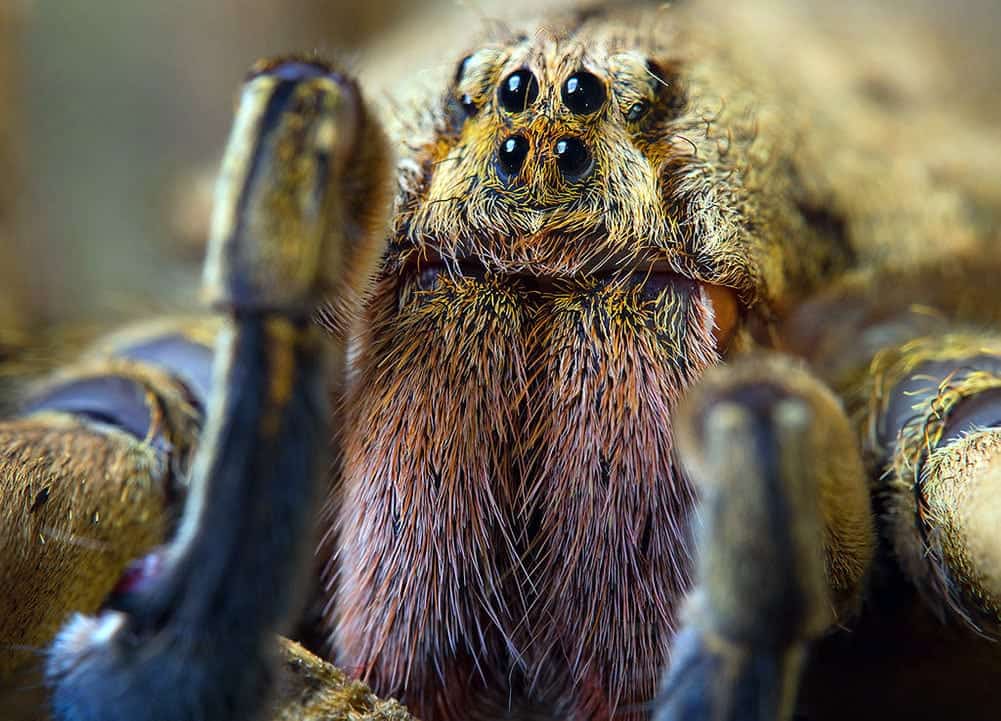
The first symptoms of being bitten by a Brazilian Wandering Spider are intense pain and profuse sweating, followed by nausea, cramping, convulsions, high or low blood pressure and shock. Males may also have a prolonged and painful turgid state. Medical attention is highly recommended, although antivenin is rarely needed. Most bites are provoked, as the spiders are not very aggressive. They can have a six inch leg span and hunt on the rain forest floor using stealth, stalking and ambush.
Read more: https://en.wikipedia.org/wiki/Phoneutria
1. Australian Funnel Web Spider
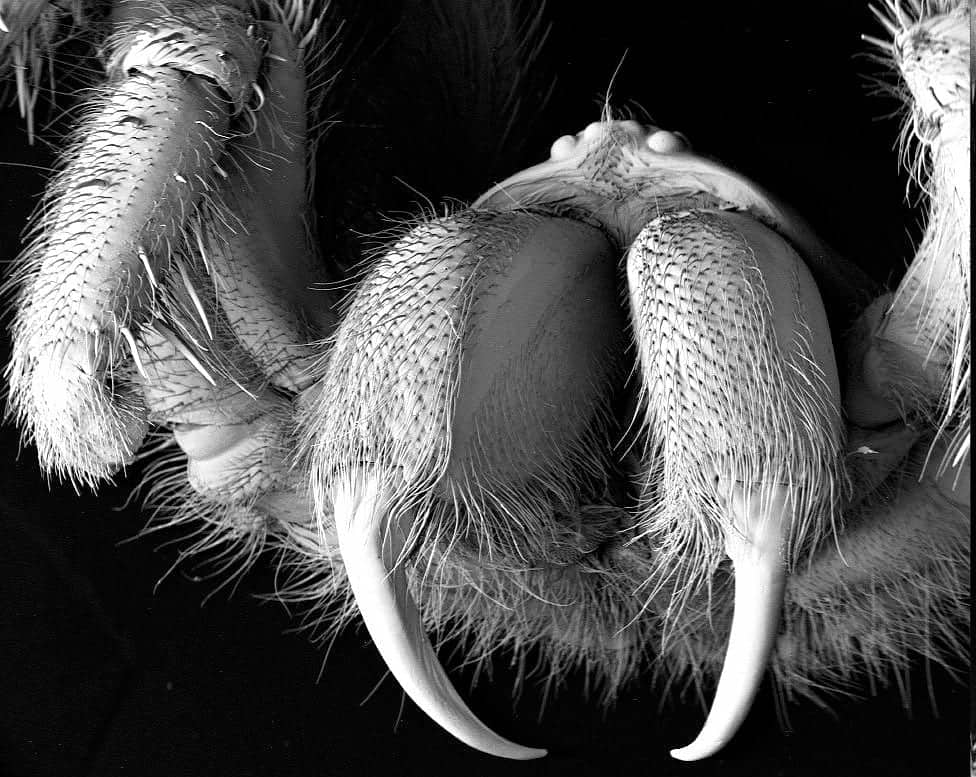
The Sydney Funnel Web Spider is so venomous that it can kill a person in fifteen minutes. Oddly, the venom is only dangerous to invertebrates and primates, so pets are generally not harmed by a bite. What makes the spider more dangerous is that it lives near people and the males frequently take refuge during the day in shoes, laundry, and gardens. When threatened, they bite, repeatedly until removed. The fangs are strong enough to pierce a fingernail or shoe leather, which isn’t surprising considering the spider had a 3-4 inch leg span.
Bonus Spider- Megarachne
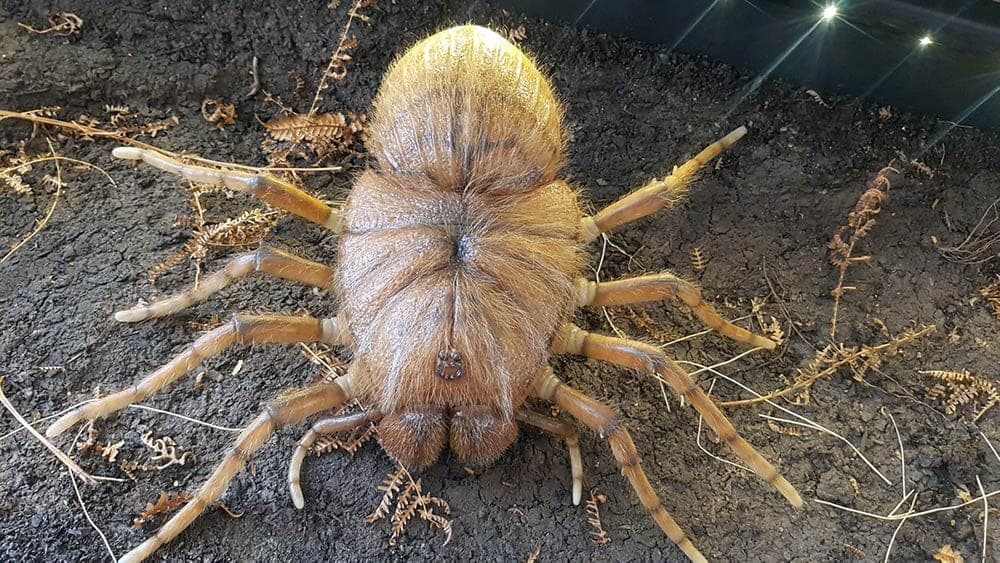
When the strange fossil was unearthed in 300 million-year-old rock in the 1980s, the paleontologists announced that the remains of the biggest spider ever to crawl had been found. Its body measured 54 cm, and it used its front appendages to sweep through the muck to capture small invertebrates. It lived during the Carboniferous Period, about 100 million years before the first dinosaurs, and was joined by nearly 800 species of cockroaches. It wasn’t until 2005 that enhanced technology allowed the scientists to correctly identify the giant creepy-crawly as a sea scorpion (read more about the scorpion symbolism), an equally scary aquatic cousin of the spider. Not a spider, but still scary!
Bonus: 5 Shocking Giant Prehistoric Spiders
Special Bonus: Top 5 most dangerous spider bites
1. Spider bite: Brazilian Wandering Spider
Has the most neurologically active venom of all spiders, and is regarded as the most dangerous spider in the world. Occasional deaths have occurred even after antivenin treatment.
2. Black Widow Spider
In humans, bites produce muscle aches, nausea, and paralysis of the diaphragm that can make breathing difficult; however, contrary to popular belief, most people who are bitten suffer no serious damage—let alone death.
3. Brown Widow Spider
The venom of a Brown Widow, while seldom life-threatening, produces very painful effects including muscle spasms, ‘tetanus-like’ contractions, and, in some cases, spinal or cerebral paralysis. This paralysis is generally temporary but might leave permanent damage to the central nervous system.
4. The Brown Recluse Spider
The bite of a Brown Recluse is extremely venomous and has led to fatalities through massive tissue loss and the subsequent infection.
5. The Six-Eyed Sand Spider
There are no confirmed bites and only two suspected ones on record. However, in one of these cases, the victim lost an arm to massive necrosis and in the other, the victim died of massive hemorrhaging, similar to the effects of a rattlesnake bite.
Not scared enough?
Check some more scary spider posts and have nice dreams!
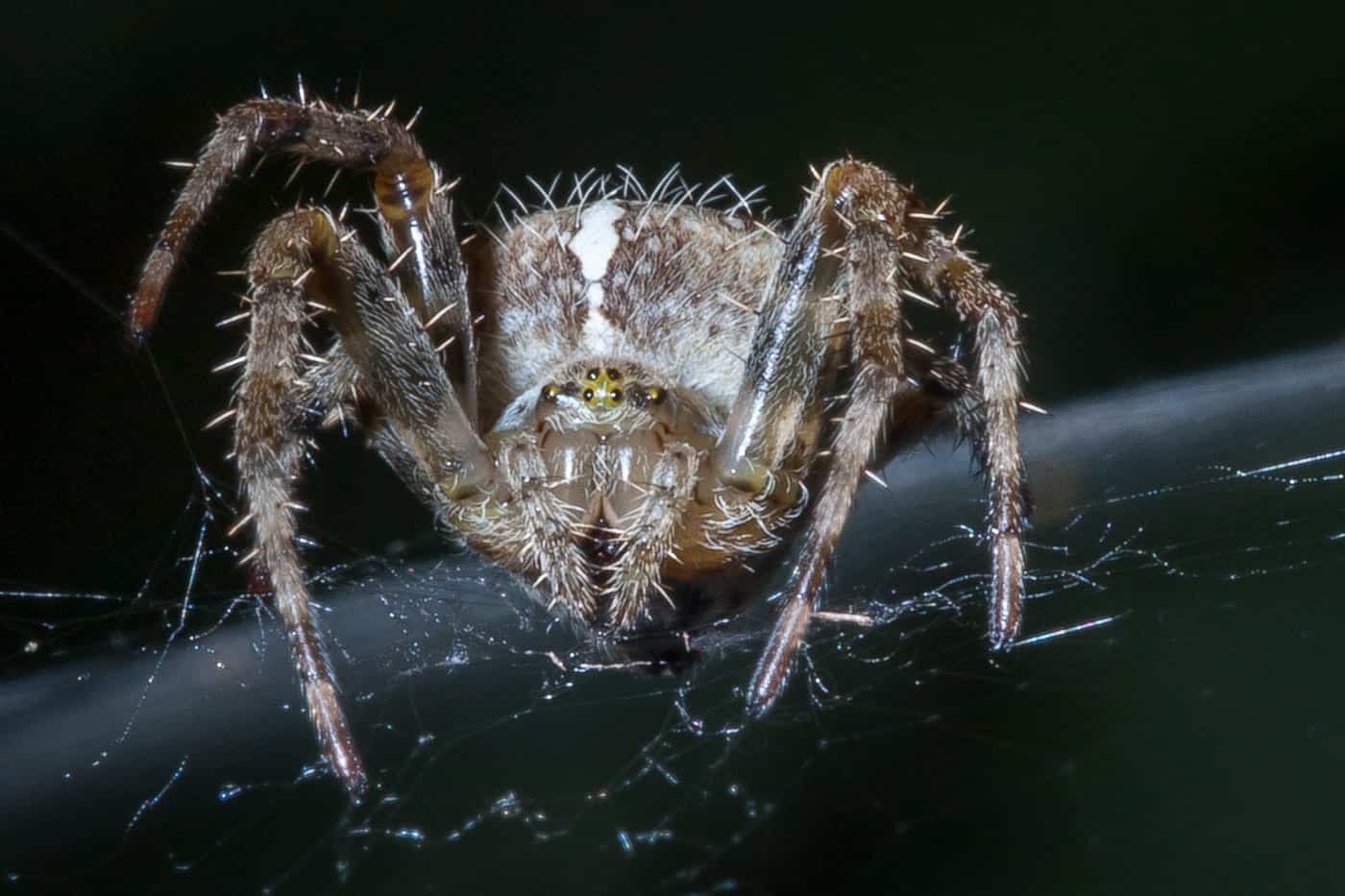

email me [email protected] advise